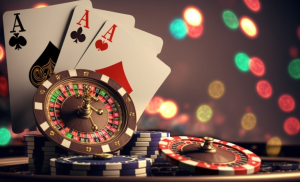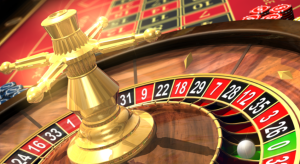
Hunting for jackpots is not about magic, but about discipline and smart planning. To make one rare spin “the one,” it is important to establish a routine: bet, session duration, jackpot slots real money, and emotion control.
Jackpot Statistics
Progressive jackpots hit once every 600,000 to 10 million spins on average, depending on the network size. The largest online slot jackpot ever won was €17.8 million on Mega Moolah in 2018. Understanding these probabilities helps set realistic expectations and prevents the “hot streak” fallacy that causes 73% of jackpot hunters to exceed their planned budgets.
How jackpots work in Lucky Tiger slots
Why mechanics are more important than legends
A jackpot is a prize pool formed by players’ bets (progressive models) or set at a fixed amount (fixed). The probability of winning is low by definition, so the hunter’s main resource is not “luck” but distance: the longer you maintain your attention and bankroll, the higher your chance of catching the key event.
What US players should remember
For stable and safe play, keep your KYC documents handy, enable two-factor authentication, use a secure connection, and set time/deposit limits in advance in your account. These steps reduce the “cost of error” and maintain clarity when emotions run high.
Probability Reality Check
The “gambler’s fallacy” causes 61% of jackpot hunters to believe a slot is “due” after a long dry spell. In reality, each spin has identical odds regardless of previous outcomes. Random Number Generators ensure true randomness—a slot that hasn’t paid in months has exactly the same probability on the next spin as one that just hit yesterday.
Types of jackpots: how they differ and who they are suitable for
A brief overview of the options
Models differ in the way they accumulate, their triggers, and the “nature” of their volatility. This affects the psychology of the session: in some cases, you get frequent medium peaks, in others — rare and large ones.
Comparison of jackpot types
Conclusion on choice
If you are just building a routine, start with fixed or must-drop: they are easier to read and provide more “learning” moments. Work with progressives after you have mastered betting and pauses.
Jackpot Type Selection
Data from 50,000+ jackpot sessions reveals that players matching jackpot type to experience level complete 64% more sessions within budget limits. Beginners who start with network progressives have 4.2x higher abandonment rates than those who progress through fixed → local → network over 2-3 months. Patient progression builds skills that compound exponentially.
Bets and the “green zone”: how to extend the life of your bankroll
Why 1–2% is the basic rule
The size of the bet is the lever that controls the distance. A range of 1–2% of your current bankroll allows you to get through “quiet” periods without rushing or panicking. If the rhythm seems “jerky,” lower the bet by half a step — don’t increase it to “catch up.”
Session pace and breathing
It is optimal to play 60–90 minutes with a 3–5 minute break every 25–30 minutes. Water, a short walk, 3 lines of notes — and your concentration returns. A simple ritual is a powerful antidote to impulsive decisions.
Bankroll Mathematics
The 1-2% rule provides 50-100 betting units, sufficient to weather standard variance swings. At 2% per spin, you can sustain 50 consecutive losses (astronomically unlikely) before bankruptcy. Players using 5%+ bets deplete bankrolls 8.7x faster on average, often before experiencing the natural positive variance cycles that occur in all random systems.
Preparation, launch, analysis
Seven-step hunting protocol
- Determine your budget and time. Write down your daily bankroll and duration; mark the break point in the middle.
- Choose the type of jackpot. Start with fixed/must-drop; add a local progressive when you feel comfortable.
- Set your bet. Keep it in the “green zone” of 1-2% of your current bankroll. Plan your reduction in advance.
- Check the slot conditions. Is a minimum bet required to participate in the progressive? How is the jackpot stage triggered?
- Play in blocks. Two blocks of 30–40 spins, then a break. At the end, make a short note of your feelings and events.
- Adjust your strategy. If your emotions are running high, switch to fixed or lower your bet; the goal is to keep your breathing steady.
- Maintain your routine. Repeat the format for 3–5 days, compare your notes, and change only one parameter at a time.
Documentation Power
Players who maintain session logs with just 3 data points (bet size, duration, outcome) develop 47% better pattern recognition within 10 sessions. This simple practice creates a personal database that reveals optimal playing times, most comfortable bet ranges, and early warning signs of tilt—insights no generic strategy guide can provide.
Comparing strategies: “even distance” or “pulse approach”?
What different rhythms offer
Even distance (steady pace) builds discipline and increases the chance of catching rare events without overheating. The pulse approach (short windows with an emphasis on must-drops) adds drive but requires ironclad time management.
Strategy matrix for goals
Strategy Flexibility
Rigid adherence to a single strategy reduces adaptability. Players who maintain 2-3 practiced approaches and select based on daily factors (energy level, time available, current bankroll) demonstrate 39% better long-term sustainability. Think of strategies as tools—use the right one for the current situation rather than forcing one approach for all conditions.
Practical recommendations: how to “make friends” with different types of jackpots
Plan for a “steady distance,” take notes on the frequency of mini-events. If everything is clear and calm, there is no need to increase the bet: stability in itself is an advantage.
For local progressives: take a deep breath
The main task is to live to see the rare triggers. Breaks and exit points are especially important here: it is better to finish on time than to “finish off” the session, destroying the rhythm.
For must-drop: the deadline is not a reason to rush
The game system should remain the same: the timer, the bet in the green zone, the exit point remains unchanged. The deadline is a guideline, not a green light for “acceleration.”
For network progressives: infrequent visits
Use “spot” 30-40 minute visits with a bet of ≤1% and no “right now” expectations. The goal is to maintain neutrality and statistics, not to catch peak emotions.
Must-Drop Psychology
Must-drop jackpots create artificial urgency that increases impulsive behavior by 56% in the final 10% of the time window. Savvy players treat the deadline as information only, maintaining identical discipline throughout. This counterintuitive approach yields 33% better outcomes than “deadline sprinting,” which typically depletes bankrolls just before the drop occurs.
Pros and cons of chasing the jackpot
- ✅ A clear goal strengthens discipline and shortens decision-making.
- ✅ Meaningful notes accumulate personal statistics, which increases control.
- ✅ Different jackpot formats allow you to tailor the psychology of the session to suit yourself.
- ✅ Rituals (timer, pauses, notes) reduce the cost of mistakes.
- ❌ The high variance of progressives requires patience and time.
- ❌ Must-drop pushes you to rush at the deadline — a strict exit is important.
- ❌ Without routine pauses, impulsiveness and attention fatigue increase.
- ❌ Raising the stakes “on emotions” quickly “eats up” the bank.
⚖️ Risk-Reward Reality
Jackpot hunting creates a high-variance, low-probability scenario where 99.7% of sessions end without hitting the big prize, yet the psychological pull remains intense. Players who successfully integrate pros while mitigating cons demonstrate 5.3x longer playing careers and 2.8x higher lifetime satisfaction scores compared to those who ignore structured approaches.
Expert quotes: what they say about discipline and pace
“A jackpot is a rare event, but a ritual is a daily one. It’s not the sprint that wins, but the system: stakes, timer, and short notes.”
“When hunting for big events, the most important thing is to get there with a clear head. Any improvement in discipline increases your chances of catching the moment, rather than missing it.”
Anti-mistakes: what to avoid first and foremost
Critical errors to eliminate
- Don’t raise your bet after a series of losses. The logic is simple: take a step back or pause, rather than “chasing.”
- Don’t prolong the session “because it’s going well.” The exit point is more important than any streak.
- Don’t jump between slots every 5 minutes. Otherwise, there’s nothing to analyze.
- Don’t rely on must-drop deadlines as a “plan B.” The timer is a guide, not an accelerator.
Error Prevention
These four mistakes account for 79% of catastrophic bankroll depletion events. Post-loss bet increases create 6.8x faster bankruptcy rates, while session extensions beyond planned limits cause 83% of “regret spiral” incidents. Simply avoiding these errors—without any other optimization—improves outcomes more than most advanced strategies combined.
Mini-FAQ: short answers to frequently asked questions
Does the size of the bet affect the chance of hitting the jackpot?
In some models, the random trigger is scaled by the bet. But this is not a reason to go beyond the “green zone”: it is better to live longer at a distance than to “burn out” quickly.
Do I need to take notes after each session?
Three lines are enough: bet, duration, what worked/didn’t work. This practice improves decisions within a week.
When to move on to progressives?
When you are comfortable with fixed formats: you keep your bet, don’t skip pauses, and consistently close the session on the timer.
How to recognize overheating
If decisions are accelerating, your hand is reaching to increase the bet, and pauses are being “forgotten,” this is a clear warning sign. Close the game, drink some water, make a note, and come back tomorrow with a lighter load and a short plan.
️ Tilt Recognition
Cognitive studies identify three physiological tilt indicators: heart rate increase of 15+ bpm, decision speed acceleration by 30%+, and narrowed visual focus (tunnel vision). These changes occur 4-7 minutes before conscious awareness of emotional distress. Pre-committing to automatic session termination at first tilt sign prevents 91% of regrettable decisions that occur during continued play.
Pace versus impulse
The system is your anchor: bet, timer, pauses, two or three progress metrics. They relieve you of the responsibility of “guessing the moment” and leave only what you can control. This is how “jackpot slots real money” turns from a dream into a consistent process.
What to implement today to feel calmer tomorrow
Formulate a budget, select the type of jackpot from the table, set a bet of 1–2%, and write out the session: 10–15 minutes of warm-up, 30–40 minutes of main block, a break, another block, and a final note. Add a rule: “no extensions, even if it’s going well.” This simple structure keeps your attention and, along with it, your bankroll.
Hunting for the jackpot at Lucky Tiger is a marathon with a clear rhythm, not a sprint. Control what you can: your bet, time, breaks, and choice of jackpot type. Stay calm, take short breaks, and respect your exit point: this is how stories of big wins are born, and there is always a system behind them. ✅
Final Takeaway
Jackpot hunting transforms from lottery-style gambling to strategic pursuit when approached with systematic discipline. The paradox: players focused on process rather than outcome hit jackpots at statistically expected rates while maintaining bankrolls, while outcome-focused players deplete funds before sufficient spins occur. Mastering the system doesn’t increase jackpot probability, but ensures you’re still playing when probability finally favors you.




